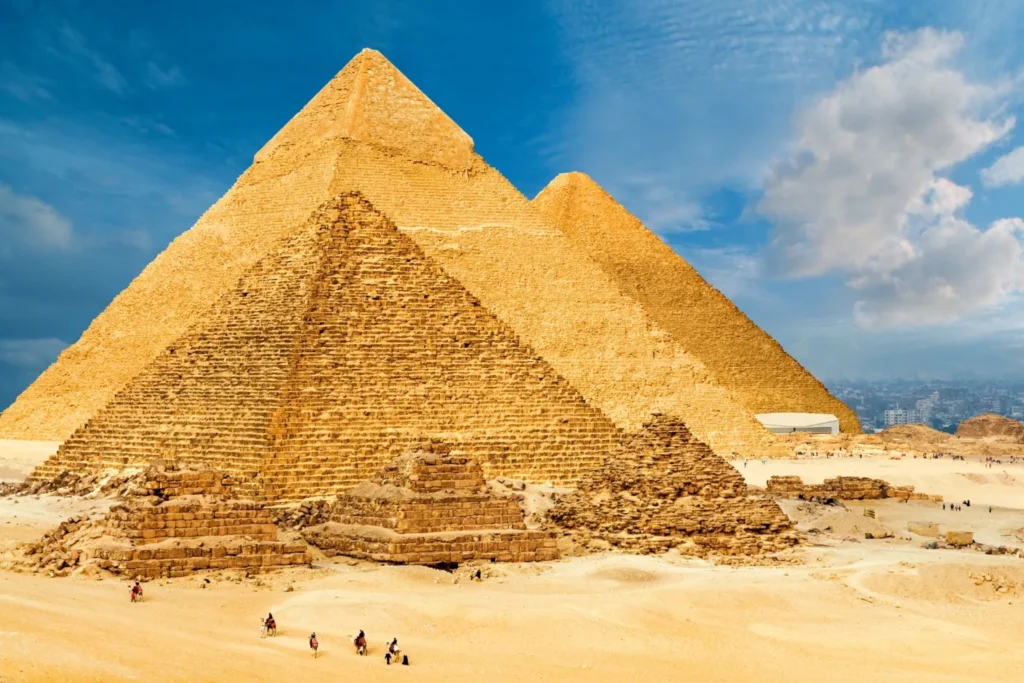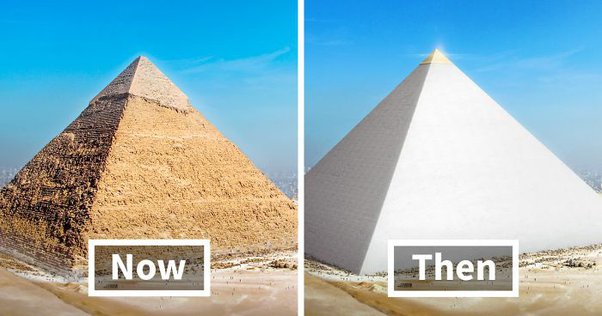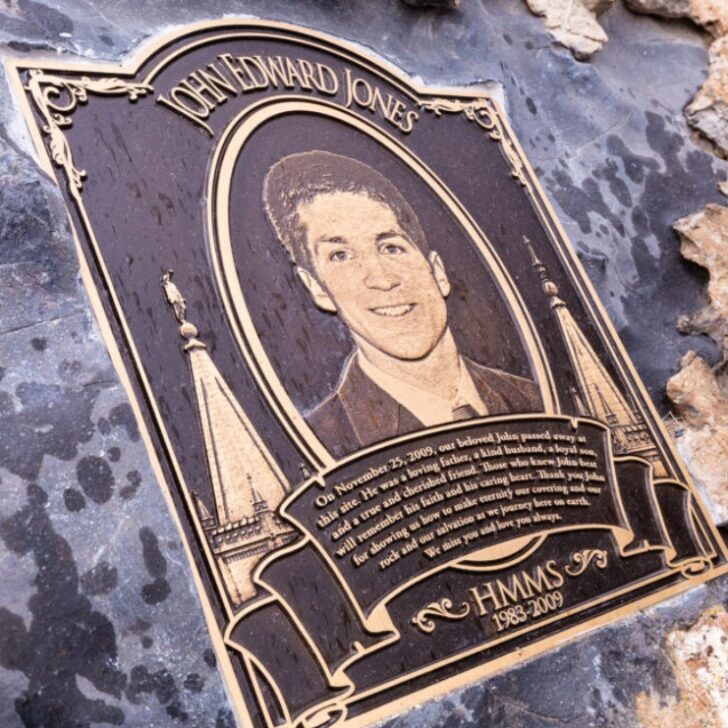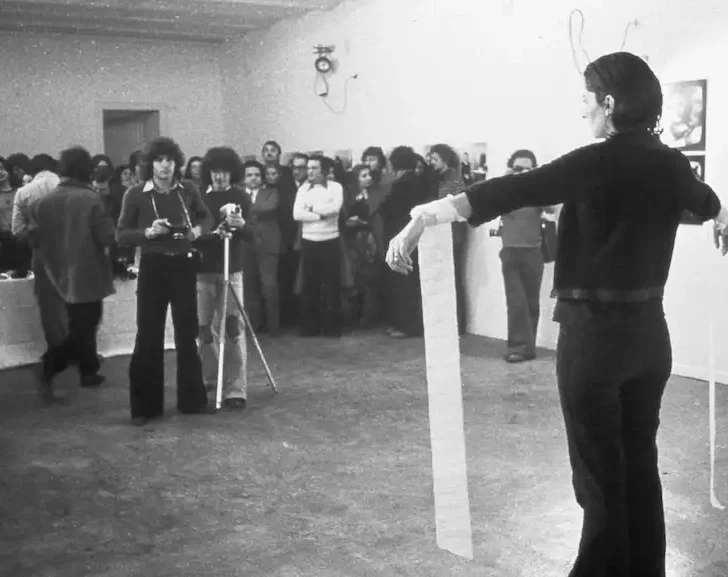Among the dunes and the flat, sandy Western Desert of Ancient Egypt, thousands of laborers, priests, conscripted workers, quarrymen, and miners began work on the largest structure anyone had ever seen.
Roughly 4,600 years ago, long before the skyscraper, the size and scale of the Great Pyramid at Giza was staggering.


It’s still one of the largest structures ever built and one of the only Wonders of the Ancient World that is largely intact.
But how did they do it? How could men build something so large and complex? Even today, we can’t fully explain how they accomplished this without power tools, heavy machinery, and modern technology.
The secrets of the trade were not lost with the downfall of Ancient Egypt, thankfully. Ancient texts and expert analysis have given us some insight into how the pyramids at Giza were built.
Khufu’s Dazzling Legacy
The Great Pyramid is one of three pyramids located in the Giza complex. It is the largest and the oldest. The middle pyramid was built by his son, Khafre, and the smallest by his grandson, Menkaure.
These structures were tombs meant to house each Pharaoh’s body while their soul traveled to the afterlife.
But the pyramids at Giza are a far cry from the short mastabas used previously, and even further from the limestone-cut tombs that would become the trend in later dynasties.
Khufu and his descendants set out to create monuments that would last. Even though it would take multiple decades to build their great monuments, it was essential to create a grand final resting place.
Khufu (also called Cheops) was a pharaoh of the 4th Dynasty of Ancient Egypt. He reigned from 2589 BC to 2566 BC, a period of nearly 30 years.
Most personal information and details about his reign are lost to time, as they were poorly documented, and few records have survived the nearly 5,000 years since his reign.

His crowning achievement was commissioning the Great Pyramid of Giza. If you ask an Egyptologist who built the Great Pyramid, they will tell you that Khufu was the pyramid’s grand architect.
But behind the Pharaoh who funded the project was a team of quarrymen, miners, taskmasters, priests, and architects who are largely forgotten. These men put in years of hard labor to construct a monument that positively dazzled in the sunlight.
What We Know
Many Egyptologists believe they have a solid grasp of the construction methods used to create the pyramids. The pyramids at Giza were constructed during the Old Kingdom and were made differently from later pyramids.
Some modern experiments suggest that about 3,500 laborers could have contributed to the Great Pyramid project to build it in 30 years. However, we don’t know for sure how long it took to build the Great Pyramid or the other pyramids on the Giza Plateau.
There is limited documentation about the scale of the project, even in the workers’ village that was built to house labourers, their families, and the staff they would need (including priests, bakers, supervisors, and livestock keepers).
However, we do know that the Great Pyramid alone is made of about 2.3 million limestone blocks.
Building Blocks
The limestone blocks used to build the Giza pyramids were mined from a local quarry, called Central Field. These massive blocks could weigh up to 2 tons each.
Moving them was certainly an undertaking, but cutting them could be as well. Limestone is a softer stone, so the quarrymen cut it using copper chisels, saws, and manual drills.
These blocks were moved using wooden sleds. Carvings showing the process of moving these blocks suggest it may have taken up to 200 men to move a single block.
Harder stone, like the granite used in the construction of the burial chambers within the pyramid, was cut using saws, wooden wedges, drills, and other cutting tools. The miners used sand or quartz as abrasive agents to help the tools dig into the stone.
Once these blocks were transported to the building site, they were painstakingly moved into place. A mortar of gypsum and rubble was used to fill the gaps in the uneven stones.
While later pyramids would be constructed with more uniform stones, the building blocks of the Great Pyramid were rough and uneven. The mortar didn’t bind the stones together but made the construction stable and smooth to prepare for the outer casing.
Stacking Stones
Once the foundation was laid, stones had to be levered up into place on each face of the pyramid. Without cranes and heavy construction equipment, the Egyptians had to find some way to get the heavy blocks on top of each other.
Egyptologists don’t have a definite answer on how they did this. While the origin of the stone can be verified, it seems that some pyramid-building tricks are still a mystery.
The widely agreed-upon theory is that the Egyptians used ramps.
Ramping It Up
You are probably imagining a very long, straight ramp leading right up to the sides of the pyramid. Egyptologists seem to agree that this is the least likely scenario.
A long, straight ramp would have to be extended to be larger with each layer of stone, which would quickly become impractical. Instead, the most popular theory is the ramps zigzagging up the side of the pyramid.
However, It’s equally likely that the ancient Egyptians used a spiral ramp that wrapped around the pyramid. This type of ramp would allow builders to access all of its faces.
The ramp itself would be supported by the part of the pyramid that was already finished, and the ramp would only need to be extended over time.
However, the ancient Egyptian laborers used the ramps; it was undeniably a daunting task.
Men had to push and pull the blocks up the ramps, so the ramps had to be at a long, low slope. To move the blocks, the ramps had to be massive, long, and perfectly placed.
Of course, ramps couldn’t accomplish this task alone. Levers and ropes were also used to help get the stones into place. The location of each stone was determined by precise measurements, which led to an extremely accurate structure.
Divine Precision
The pyramids of Giza have remarkably exact measurements. For the Great Pyramid, we may be able to thank Khufu’s vizier, Hemiunu.
Egyptologists theorize that Hemiunu was responsible for the architecture and measurements of the Great Pyramid. The accuracy of these measurements and alignment are remarkable, even by today’s standards.
Each face is almost the same size, with a deviation of less than a foot. The angle of each corner is within a half degree of being truly 90 degrees. Each point is aligned perfectly with a cardinal direction.
Since the pyramids were meant to be used as divine tombs for the Pharaoh, whom they believed was a God on Earth, this precision was important.
How they achieved such amazingly accurate measurements and orientation is still a mystery. Whatever technology they used to create these perfect corners has only led to more intrigue surrounding the pyramids.
Even more theories about the pyramid-building process cropped up following the revelation of these measurements.
Keeping the pyramids straight and well-aligned as they built them might have been impossible if not for a few tricks. Upon observing perfectly spaced round holes around each side of the two smaller pyramids in Giza, Egyptologists began to develop a theory.
These holes might once have held wooden beams, which would act as guiding lines for pyramid builders to follow. Though no such holes are seen on the Great Pyramid, the use of these guideposts would allow for better precision while building.
When the pyramid was complete, these holes would be completely covered. The finishing touch on each pyramid was a smooth limestone casing.
A Beautiful Monument
Like most pyramids throughout Egypt, the pyramids on the Giza plateau had a smooth casing to cover rough stone building blocks.
The pyramids at Giza stand out because of the special white limestone casing that gave them an even more impressive appearance. The sunlight made the limestone shine, a fitting appearance to a kingly monument.

This white limestone was mined from Tura, which was farther from the building site than the quarry used for the interior limestone blocks. Tura had the whitest limestone of all Egyptian quarries, but it wasn’t easy to mine.
Tura limestone was deep underground. Miners had to tunnel underground to cut the stones, with only torchlight to guide them as they drilled, sawed, and cut at the stone.
Once this special limestone was raised using sleds and levers, each block was transported to the building site via the Nile.
Aside from the white casing that all three pyramids used, the middle pyramid (which belonged to Khufu’s son, Khafre) had pink granite along the bottom. These casing stones probably made this pyramid stand out among the others for hundreds of years after it was built.
Today, few casing stones remain on any of the pyramids of Giza. You can still find some casing stones around the base of Khafre’s pyramid, and there are some white limestone casing stones at the base of the Great Pyramid.
Unfortunately, time and sand have worn away most of the smooth, shining surface of the pyramids at Giza.
Conclusion
In ancient Egypt, the pyramids at Giza were a massive undertaking that took several decades to construct. A workforce of thousands labored for years to bring the limestone and granite used to construct them from locations near and far.
Today, they are a popular tourist attraction. The pyramid complex surrounding the Giza pyramids is a UNESCO World Heritage Site.
You can visit the pyramid complex, which includes the Sphinx. It’s still possible to see the amazing work that went into building these larger-than-life structures.
Though most of the facing stones are gone, the scale of the pyramids still defies comprehension. The innovation and engineering of the ancient Egyptians seemed to exist well before their time.
Without power tools, heavy machinery, or giant cranes, these dedicated workers were able to raise the largest structure created in the ancient world.
Sources
https://www.theglobaleducationproject.org/egypt/studyguide/gpmath.php
https://www.archaeology.org/issues/473-2207/features/10601-egypt-wadi-el-jarf-port-papyri
https://www.nationalgeographic.com/history/article/giza-pyramids#:~:text=Scientists%20and%20engineers%20are%20still,ropes%2C%20rollers%2C%20and%20levers.
https://eng.libretexts.org
https://www.thearchaeologist.org/blog/a-day-in-the-life-of-the-pyramid-builders-in-ancient-egypt













Leave a comment